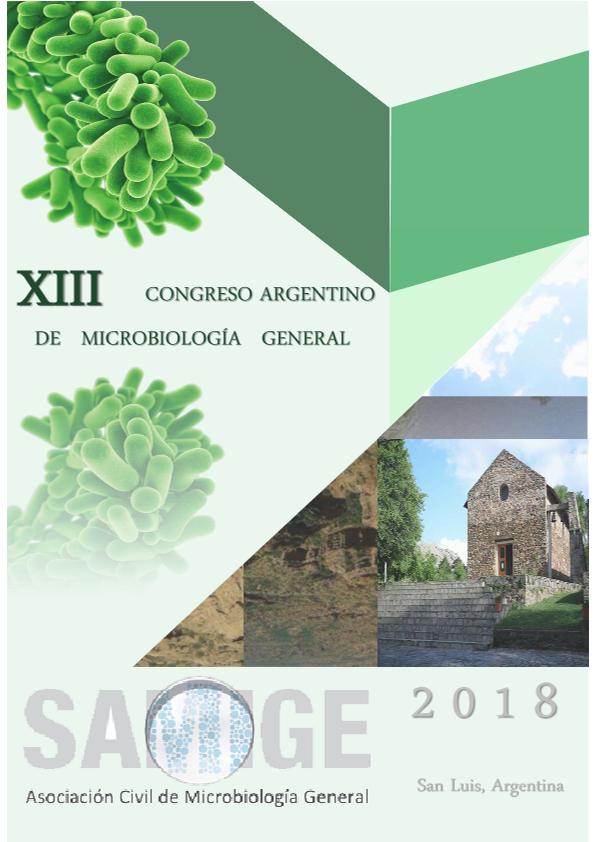Evento
Degradation of sugarcane vinasse by an autochthonous fungus: Molecular identification
del Gobbo, Luciana Melisa ; Rulli, Macarena María
; Rulli, Macarena María ; Villegas, Liliana Beatriz
; Villegas, Liliana Beatriz ; Colin, Veronica Leticia
; Colin, Veronica Leticia
 ; Rulli, Macarena María
; Rulli, Macarena María ; Villegas, Liliana Beatriz
; Villegas, Liliana Beatriz ; Colin, Veronica Leticia
; Colin, Veronica Leticia
Tipo del evento:
Congreso
Nombre del evento:
XIII Congreso Argentino de Microbiologia General
Fecha del evento:
08/08/2018
Institución Organizadora:
Universidad Nacional de San Luis;
Sociedad Argentina de Microbiología General;
Título del Libro:
Libro de Resúmenes del XIII Congreso Argentino de Microbiologia General
Editorial:
Sociedad Argentina de Microbiología General
Idioma:
Inglés
Clasificación temática:
Resumen
Various fungus-based processes can be applied to degrade sugarcane vinasse, an acid effluent (pH=3.5−5.0) from sugar-alcohol industry which contains a high chemical oxygen demand (COD) and biochemical oxygen demand (BOD). Previous studies demonstrated the potential of a native fungus from the province of Tucumán (strain V1) to degrade a vinasse sample. In the present study, the molecular identification of this strain was carried out. In addition, it was evaluated the effectiveness of the microbial treatment conducted during 15 d. Mycelium in the exponential growth phase was harvested by centrifugation and total DNA extraction was performed using DNA Kit, MOBIO. Amplification of the rDNA ITS1-5.8S-ITS2 regions was carried out using ITS1 and ITS4 primers and 18S rDNA sequences were compared with partial 18S rDNA sequences published in the GenBank using the BLAST tool from the National Center for Biotechnology Information (NCBI). Finally, a phylogenetic tree was constructed using the neighbor-joining method. Regarding the microbiological treatment, 200 mL of vinasse were inoculated with fungus spores at a final concentration of 1×106UFC/mL, and was incubated at 30ºC (150 rpm) for 15 d. Vinasse samples without inoculation were used as abiotic controls (AC). Growth kinetics (measured as biomass production), pH changes, and the removal percentages of COD and BOD was determined each 72 h in the microbiologically treated vinasse (TV) and in AC, by using standard methods for the examination of wastewater. The fungus strain was identified as Aspergillussp. V1 and it was closely related to Aspergillus terreus ATCC MYA-4898 (99%).As expected, in the AC no was detected any significant growth until the end of the assay. For TV it was observed the maximum growth at 9th d of cultivation (biomass higher than 5 g/l). The TV for 3 d did not show a significant increase in the pH with respect to AC, which remained unchanged throughout the entire experiment (pH = 4.1). However, at 6thd of incubation, pH was significantly increased until a value close to neutral (6.7 ± 0.5). At 12thd of cultivation, it was detected the maximum COD and BOD removal, with percentages of 59% and 89%, respectively. At that point in time, only a 10% and a 30% was removed from AC. Based on these results, a removal of COD and BOD of 49% and 59%, respectively, can be attributed to the metabolism of Aspergillus sp. V1. This could involve a significant reduction in the toxicity of the effluent mediated by the action of this strain.
Palabras clave:
AUTOCHTHONOUS FUNGUS
,
BIODEGRADATION
,
SUGARCANE VINASSE
,
Aspergillus sp, V1
Archivos asociados
Licencia
Identificadores
Colecciones
Eventos(INQUISAL)
Eventos de INST. DE QUIMICA DE SAN LUIS
Eventos de INST. DE QUIMICA DE SAN LUIS
Eventos(PROIMI)
Eventos de PLANTA PILOTO DE PROC.IND.MICROBIOLOGICOS (I)
Eventos de PLANTA PILOTO DE PROC.IND.MICROBIOLOGICOS (I)
Citación
Degradation of sugarcane vinasse by an autochthonous fungus: Molecular identification; XIII Congreso Argentino de Microbiologia General; San Luis; Argentina; 2018; 1-4
Compartir



